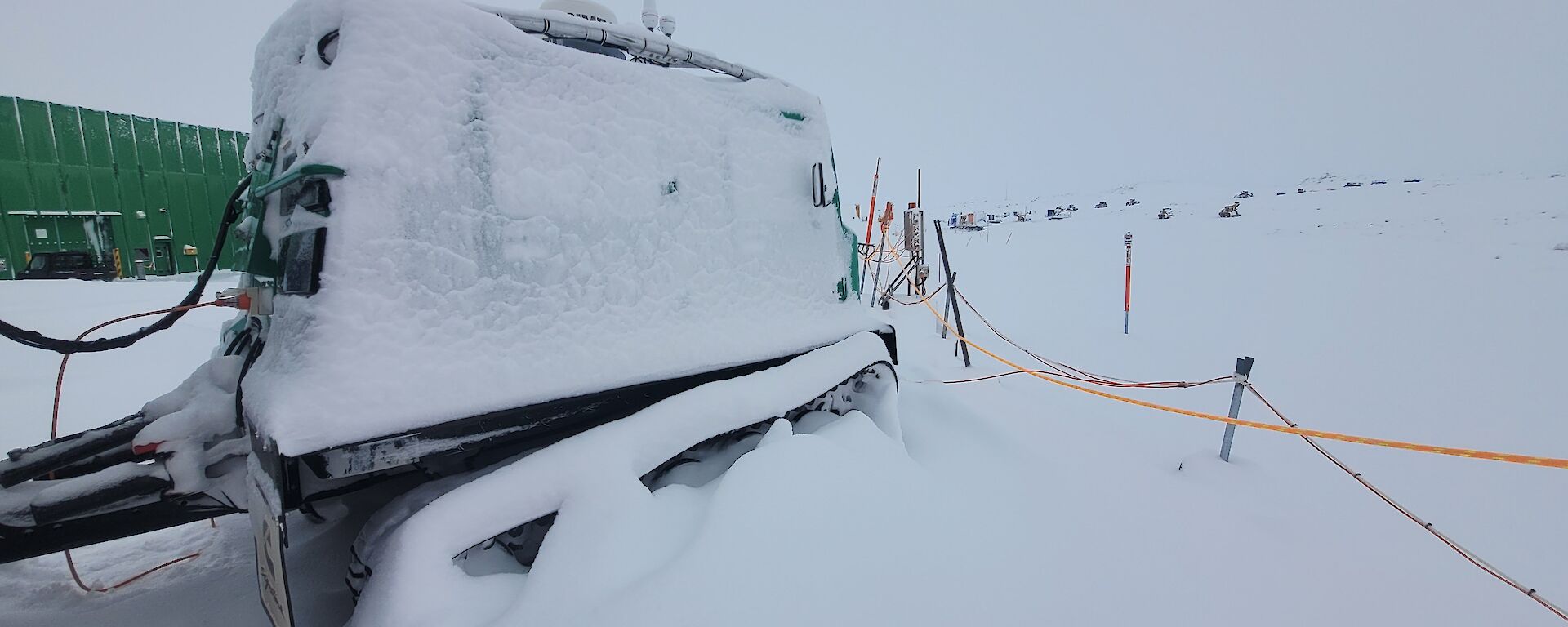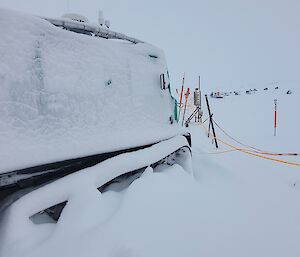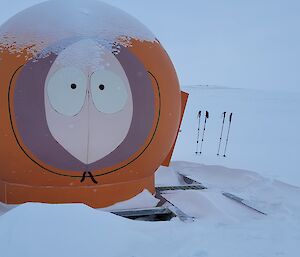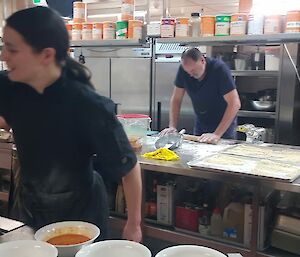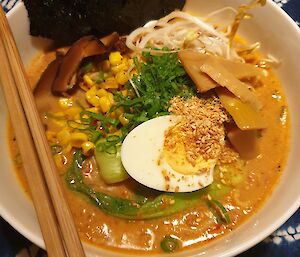As a chef, creating exciting and varied food is one of my chief goals down South – I’m the only restaurant in town, so I’ve got to keep it fresh! If not literally fresh, then at least rich in fresh ideas. So was born the ambition to make tonkotsu ramen, i.e. that delicious thick creamy white Japanese pork broth dish full of steamy noodles and delightful toppings.
First step, get some trotters for the broth. Now, trotters are not an ingredient on our food inventory so I had to think outside the box. We had 3 whole pig carcasses of various sizes destined for spit roasting, and those piggies had leggies. Now we have 3 pig carcasses missing their lower legs! A reciprocating saw and an obliging plant operator helped achieve this step. Unfortunately, after slicing the frozen trotters, blanching, scrubbing and simmering them for 12 hours, I deemed the flavour too … porky. Most of the meat we receive is of truly outstanding quality but the 3 little piggies didn’t live up to this standard. So out with the pig, in with the chicken. After some internet trawling, I discovered some advice on making chicken ramen broth just as creamy as tonkotsu ramen broth. It involves cooking quite meaty chicken carcasses for about 6 hours, then roughly blitzing the mushy carcasses to extract minerals and melted collagen from the bones and cartilage, resulting in a super creamy, opaque broth.
Chicken and pork are friends, right? Before I had switched my plan to make tori (chicken) paitan ramen broth, I had already made the quintessential ramen topping – chashu pork. This food of the gods is quite simple – take some pork belly, cut in half, truss with butcher’s twine to make a roll, dump into a cryovac bag with some soy, sake, ginger, garlic and dashi stock, seal the bags and cook sous vide style for 10 hours overnight. For those unfamiliar, sous vide is a water bath cooking method using a special heating element that swirls the water and maintains a steady temperature, 85 C in this case. The meat cooks in its own juices in the sealed bags. Kudos to the AAD for providing a sous vide machine.
Next step is noo-noo time. Ramen noodles are notoriously tricky to make with the ‘proper’ texture at home. To get the bounce and toothsome quality of ramen noodles, the dough must be hellishly stiff, and have a little sodium carbonate added (known as kansui in Japanese). Luckily, I have a very large capacity Hobart stand mixer for bread making, and its motor could handle my lump of rock dough. After an overnight rest in the fridge, then another overnight rest in the fridge due to me deciding to delay ramen day in order to make the new broth, my noodle dough was ready to roll. Queue pasta machine and arm workout.
But before the noodles could be rolled, all the toppings had to be made ready. A quick late-evening cooking session saw the production of menma (simmered bamboo shoots), the chopping of garlic chives, toasting of sesame seeds, the slicing of cold chashu pork, and the trimming of nori sheets.
Saturday morning and it’s finally time to eat ramen! I have station leader Ben as my slushy and he gets instructed to hustle into position as the ramen garnisher. I start rolling the ramen noodles, then boil the bundles, one per bowl, for one and a half minutes while my hungry colleagues wait patiently in line. My arm goes into the steamy pot to fish out the slippery noodles, which get piled straight into a hot bowl of broth (choice of chicken or creamy soy milk vegetarian broth), then the bowl crosses to the bench to be topped with a slice of flame-seared chashu pork belly, sesame seeds, nori and menma. Then down the hatch with happy smiles following. I call that a success.
No time to rest yet! After a quick and efficient kitchen clean-up with lots of helping hands, I am busy prepping for an overnight hut jolly with my buddy Chezza. We’re off to Jack’s hut, our favourite, for BBQ brisket sliders, cheese, chats and chilling (but only in mood, not body temp). It may have taken us a solid 2 hours to heat up our Hägg, dig the blizz out (inside the caboose and outside), finish a few station jobs, load her up then take the 30 to 40-minute bumpy drive out to Jack’s, but it’s always worth the effort to get off station.
A slight excitement occurred half-way, when our Hagg suddenly dropped out of gear. Only a few minutes of stumbling around in the falling snow, guided by instructions from station mechanical supervisor Nick over the VHF, and we found the relevant lever under the engine bay cover between the rear seats. “Next to the drive shaft!” said Nick. Right, right … Our mechanical knowledge somewhat improved, we continued on and arrived in short order. We crank up the gas heater, chuck the genny on, turn on the electric heater and sit back for a cuppa and a solid 9-hours of chatting. There’s nothing like being in the middle of frozen nowhere for a good chin-wag. Thanks Antarctica.
Claire Moser – Winter Chef
Casey station

